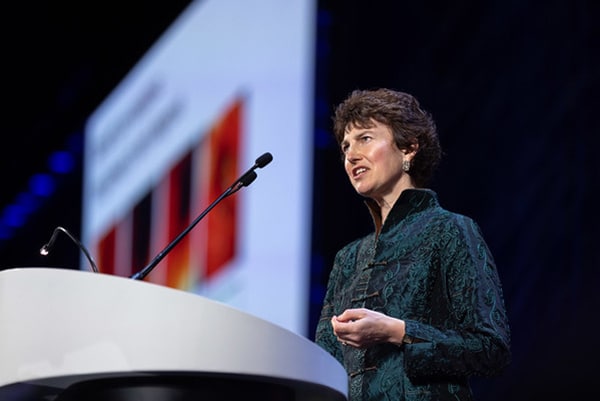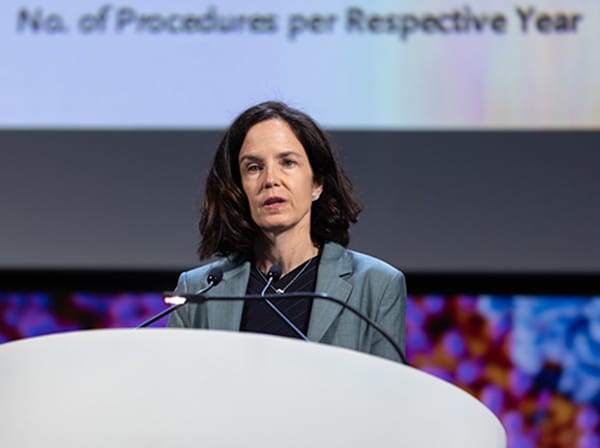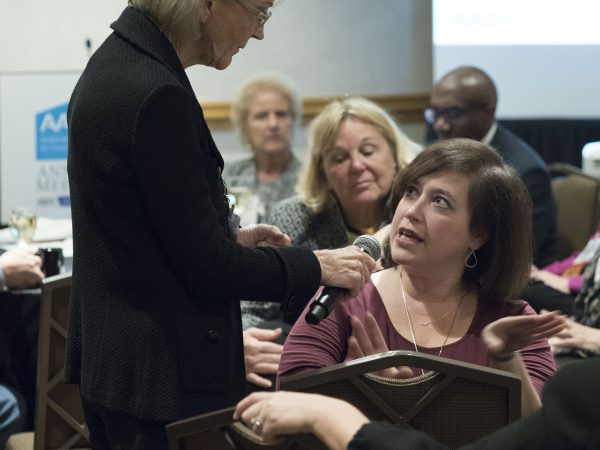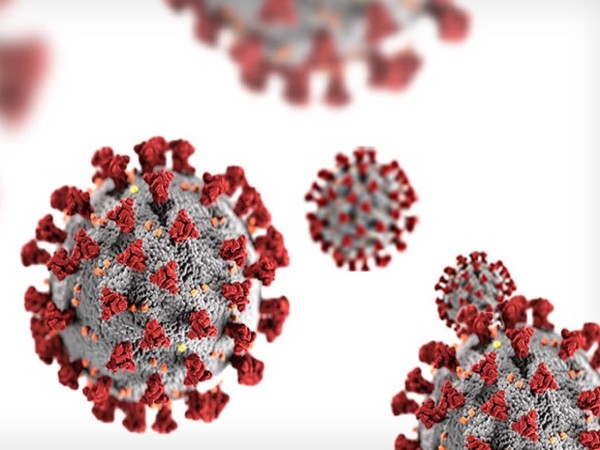Annual Meeting 2022: Understanding and Intercepting Precancer
In a 1735 letter to the citizens of Philadelphia about the need to tighten the city’s fire safety measures, Benjamin Franklin famously wrote, “An ounce of prevention is worth a pound of cure.”
This was long before scientists—even the pioneering Franklin—knew about the series of molecular changes that transform a normal cell into a cancerous one. Most physicians of the time likely never dreamed the development of cancer could be slowed or prevented altogether.
Almost 300 years later, however, many researchers recognize prevention and early detection of cancer as the best way of avoiding a deadly form of the disease.
The first Plenary Session of the AACR Annual Meeting 2022, held in New Orleans April 8-13, addressed an important frontier of cancer prevention—the understanding of the molecular mechanisms by which cancer precursors transform into malignant cells. The session, Precancer Discovery Science, featured advances in screening, risk stratification, and cancer predisposition syndromes.
Addressing Unmet Needs
In order to better serve patients at a high risk of developing cancer, researchers must address three crucial unmet needs, said Avrum Spira, MD, MSc, global head of the Lung Cancer Initiative at Johnson & Johnson and a professor of medicine, pathology, and bioinformatics at Boston University.
The first, Spira explained, is the need to better identify individuals who have an elevated risk of cancer, including patients with precancerous lesions.

©AACR/Scott Morgan 2022
The second need, he continued, is to accurately define which at-risk individuals will actually develop cancer, and the third is to develop ways to intervene. “We have to get to the root cause of what takes a preneoplastic lesion and allows it to become an invasive cancer,” Spira said.
This paradigm shift, he argued, will require the comprehensive integration of information ranging from genetic data to how cells interact with each other to spatial descriptions of the tumor microenvironment. As part of the Human Tumor Atlas Network, the National Cancer Institute is supporting development of the Pre-Cancer Atlas, which aims to characterize the transition of cells from a precancerous state to a malignant state.
“Think of it as a temporal and spatial map of all the cellular and molecular events that occur as a preneoplastic lesion progresses towards invasive cancer,” said Spira, who co-leads the Lung Pre-Cancer Atlas.
To illustrate the ways such an atlas could address the unmet needs, he described a study mapping premalignant squamous cell lesions in the lung. These may appear as suspicious areas on radiography images, but they are often deep in the lung, making them difficult to biopsy. Further, while some quickly progress to squamous cell carcinoma, others remain benign and do not warrant invasive intervention.
“The standard of care for these patients is watchful waiting,” Spira said.
Spira and colleagues sequenced RNA from premalignant squamous cell lesions that were accessible for sequential biopsies, which revealed a gene expression profile characteristic of progression. Single-cell RNA sequencing identified this profile as a repressive signature in a subset of immune cells. The gene signature was evident in cells from bronchial brushings, a less invasive screening method, and the immune suppression could be targeted through inhibition of the microRNA miR-149-5p.
“We now have a real chance to develop Pre-Cancer Atlases across multiple tumor types, and the insights there are going to address those three unmet needs,” said Spira.
Identifying At-Risk Patients
The struggle to diagnose precancerous lesions and further stratify their progression risk is exemplified by research on Barrett’s esophagus (BE), a lesion that may develop into esophageal cancer. According to Rebecca Fitzgerald, MD, interim director of the Medical Research Council Cancer Unit at the University of Cambridge, only 10 percent of esophageal cancer patients have a previous diagnosis of BE, but 40 to 50 percent of patients have evidence of the condition at the time of an esophageal cancer diagnosis.
Nevertheless, only 0.3 percent of BE cases progress to cancer, meaning more data is needed to define patients with an elevated cancer risk.

©AACR/Scott Morgan 2022
Defining the at-risk population begins with ease of testing. Fitzgerald holds a patent for a technology called Cytosponge, which samples esophageal cells without the need for endoscopy. Patients swallow a vitamin-sized capsule containing a sponge attached to a string. When the capsule dissolves, the sponge is pulled back through the esophagus, collecting cells along the way.
The cells are then examined for evidence of BE, which include morphological differences and the expression of a protein called TFF3. Fitzgerald and colleagues have found that high expression of TFF3 and mutant p53 are strong predictive markers of BE progression.
In a stage IV clinical prevention trial, Fitzgerald and colleagues randomly assigned patients with BE symptoms to physician-recommended care or to receive the Cytosponge test. BE was diagnosed in 10.6 times more individuals using the Cytosponge test, 13 percent of whom had elevated TFF3 and were referred for endoscopy, demonstrating that this test can more sensitively identify patients with the lesion and more accurately stratify them for follow-up care.
“The approach would avoid clogging up endoscopy lists with patients at low risk because you’re focusing on the high-risk cohort,” she said. “This is how you use your technology smartly.”
Understanding Molecular Mechanisms to Predict Progression
Discovering biomarkers such as TFF3 often depends on an understanding of the basic biology underlying a lesion or a mutation. Veronica Kinsler, MBBCh, PhD, a senior group leader at the Francis Crick Institute in the United Kingdom, probes these mechanisms in a unique condition called somatic mosaicism.
Individuals with somatic mosaicism develop a mutation early in fetal development, such that some of the person’s cells have the mutation and some do not. Occasionally, these mosaic mutations mimic those seen in cancer. Kinsler studies a condition called congenital melanocytic nevus (CMN), often driven by a mosaic mutation in NRAS or BRAF, genes commonly mutated in melanoma. These patients develop large, mole-like patches on significant areas of their skin and have an increased risk of cancer.

MBBCh, PhD
“Mosaic disorders sit somewhere between inherited genetic disease and somatic cancers,” Kinsler said, adding that the disorders provide unique opportunities to study cancer-causing mutations. For example, because around one third of CMN patients have a family member with the disease, Kinsler and colleagues were able to find a genetic aberration that predisposes individuals to these mutations—a set of DNA duplications on the X chromosome.
Kinsler also described a study in which researchers found that the oncogenes GNAQ and GNA11 disrupt cells via a different molecular mechanism than originally thought. Individuals with mosaicism of these genes develop calcium deposits in blood vessels, which hinted at a disruption in calcium signaling. The researchers confirmed this finding in cells with GNAQ and GNA11 mutations and found that inhibiting the calcium channel CRAC could slow cancer cell growth.
Exploring Precancer in Space
Studying cancer development in cells that are not yet precancerous can require creative approaches. Catriona Jamieson, MD, PhD, chair of the Plenary Session, sought to understand premalignant changes in hematopoietic stem cells—by launching them into space.
In 2019, NASA published results from its Twins Study, which examined the physical and biochemical toll space takes on the human body by comprehensively comparing an astronaut who spent a year on the International Space Station to his identical twin who remained on Earth. One finding was that the hematopoietic stem cells of the astronaut twin had changes associated with preleukemia.

©AACR/Scott Morgan 2022
Jamieson and colleagues wondered if launching cells into space might have the same effect, creating a unique way to induce premalignancy.
The researchers developed a fluorescent reporter that could monitor progression of cells through the cell cycle. They applied this reporter to hematopoietic stem cells isolated from healthy individuals, in a bioreactor that could monitor the cells in real time, and sent the cells to the International Space Station. The reporter allowed them to study changes in cell behavior; they found, for example, that the number of proliferating stem cells increased, and the number of dormant stem cells decreased during the first month.
“This has been a very useful system to track how stem cells function in the normal, premalignant, and malignant setting—on the ground and in this uniquely stressful environment of low-Earth orbit,” Jamieson said.
A better understanding of the mechanisms leading to progression, Jamieson explained, could spark new therapies targeting the process. She and her team discovered, for example, that the RNA editor ADAR1 upregulated oncogenic STAT3 signaling in stem cells, and that inhibiting ADAR1 splicing prevented this change. Jamieson eventually hopes to test the splicing inhibitor rebecsinib on patient-derived cells in space.
Intercepting Cancer Development
Initiatives directed toward understanding the mechanisms by which a normal cell turns malignant help strengthen our overall knowledge of cancer, but they can also provide researchers with ideas for novel prevention strategies.
Susan Domchek, MD, the Basser Professor in Oncology at the University of Pennsylvania Perelman School of Medicine, studies the cancer predisposition genes BRCA1 and BRCA2, mutations in which can increase an individual’s risk of breast, ovarian, prostate, and pancreatic cancer. While scientists have known about the BRCA genes for almost 30 years, few preventative measures outside of prophylactic surgery exist for patients harboring mutations.

©AACR/Scott Morgan 2022
“Risk-reducing surgery approaches have a significant impact on quality of life, and we should not be satisfied with these as the approaches to take,” said Domchek.
Recently, researchers have identified that BRCA-dependent cancers may rely on a signaling pathway involving the proteins RANK and RANKL for continued growth, especially in early stages of the disease. Domchek and colleagues are currently planning a clinical trial to test whether the RANKL inhibitor denosumab can prevent breast cancer in individuals with a BRCA mutation.
The BRCA-P clinical trial is not yet open in the U.S., but the researchers intend to recruit 2,918 individuals and randomly assign them to receive denosumab or a placebo every six months for five years. The patients will be monitored for an additional five years for the development of breast cancer.
“This is a real, tangible example of how we can do cancer interception,” Domchek said.
Domchek also discussed the possibility of using vaccines to prevent cancer in individuals with BRCA mutations. Vaccines to treat cancer have had limited success, owing partially to the immunosuppressive environment around most tumors. Vaccinating a patient before they develop cancer, however, may work around these issues, she speculated.
Domchek described one such vaccine currently in clinical development, which targets the telomerase gene hTERT, expressed in nearly all human cancers. The vaccine has been tested in a phase I clinical trial aimed at preventing relapse in breast cancer survivors with BRCA mutations, which demonstrated promising safety and immunogenicity. Expanding on this, Domchek and colleagues are preparing a clinical trial to test the efficacy of an hTERT vaccine in individuals with BRCA mutations who have not had cancer.
“We have a long way to go in proving that this works, but it is an interesting potential approach,” Domchek said.



